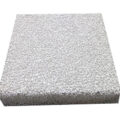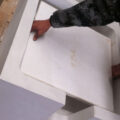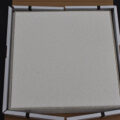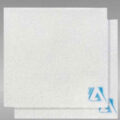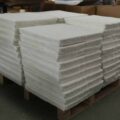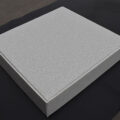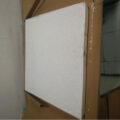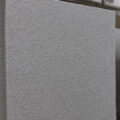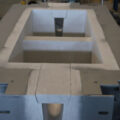The smelting of aluminum alloy is an important part of the aluminum alloy processing process, which is reflected in the smelting process’s alloying, purification, and refinement processing technology. Alloy purification mainly adopts furnace flux refining and external foam ceramic filter to remove non-metallic inclusions in aluminum alloy melt, which has long become an important means of aluminum liquid purification.
Foam ceramic is a porous ceramic product with an open porosity of 80% to 90%, a density of 0.3 to 0.6 g/cm^3, a unique three-dimensional network framework, and an interpenetrating pore structure. The earliest ceramic foam filter was successfully developed in 1978 and used in aluminum alloy casting systems.
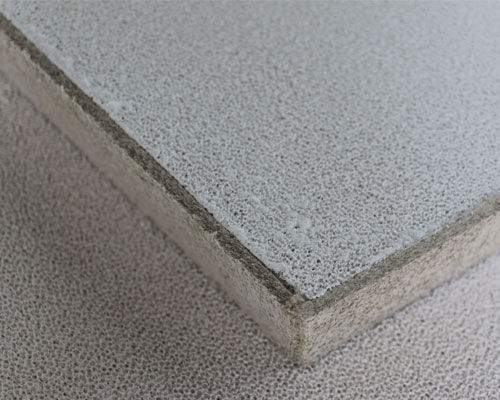
Ceramic Foam Filter (CFF) production generally uses a three-dimensional network structure and connected pores of organic foam as a carrier. It is immersed in a special ceramic slurry with thixotropy, and a special roll extrusion process is adopted to make the ceramic slurry The material is evenly spread on the skeleton of the carrier, then dried and solidified, and then calcined at a high temperature.
The application of ceramic foam filter plates in the aluminum processing industry has become popular, and there are mainly two modes of application in the purification of deformed aluminum alloy melts.
One is in the aluminum alloy semi-continuous casting line. The melt is refined by spraying powder in the furnace. The foam ceramic plate is used for filtering outside the furnace. The ceramic filter plate is replaced every casting time. Nowadays, some aluminum processing plants are filtering An online deaerator is added to the front to improve the purification effect.
The second is in the continuous casting and rolling line, according to the size of the pressure difference before and after the filter plate to determine its replacement cycle. As for the selection of the filter plate, it is determined according to the unit time flow rate of the molten aluminum and the total amount of the molten aluminum. The choice of foam ceramic filter plate with a large number of meshes and pores depends on the cleanliness requirements of the final molten aluminum. The higher the requirement for the cleanliness of molten aluminum, the smaller the pore size selected.
Foam ceramic filter aluminum melt filtration is the last process of aluminum liquid purification. Before this process, flux spraying refining or online rotary degassing unit has been used, so the impurity phase hydrogen particles in the aluminum liquid that have not been removed are more fine and dispersed.

